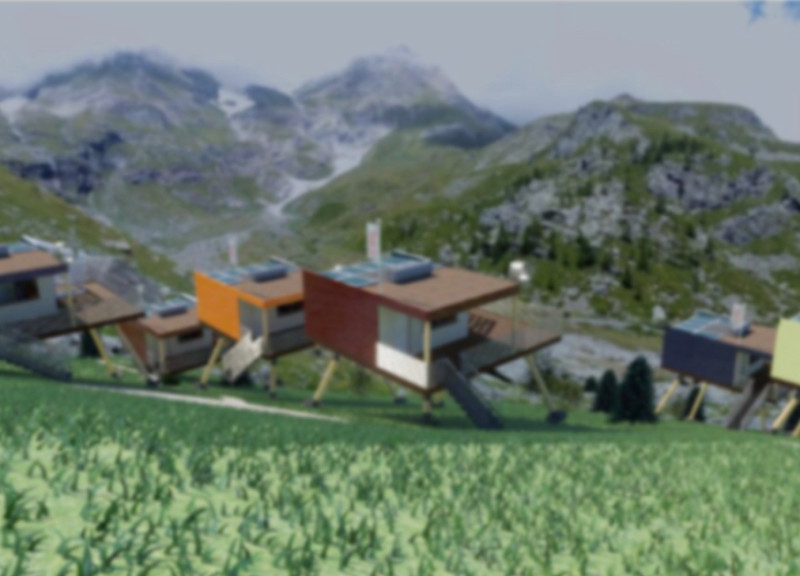5 key facts about this project
The modular living solution is located in Balme, within Pian della Mussa, Italy, an area known for its rich biodiversity. Designed for professionals, the project draws inspiration from the lunar Lem, built for NASA. It aims to create an independent and environmentally friendly living space that works well with its natural surroundings. The compact design promotes both efficiency and sustainability.
Concept and Structure
The building is prefabricated using X-Lam systems, a construction method that allows for quick assembly and reduces waste. There is no need for extensive foundation work due to specialized assemblable columns that support placement on various surfaces. The interior layout is designed to maximize space, with designated areas for living, sleeping, and working. This organization enhances functionality, making it adaptable to the needs of residents.
Energy Efficiency
Energy efficiency plays a crucial role in the design. Underfloor heating ensures comfort while minimizing energy use. The roof features photovoltaic panels, solar thermal systems, and a wind turbine generator. Together, these elements collect renewable energy, allowing residents to meet their energy needs sustainably.
Materiality and Aesthetics
The exterior design considers both function and visual appeal. Wooden shakes provide a warm look while adding insulation. Stone wool corrugated panels cover the walls, improving energy efficiency and weather resistance. These materials support the project’s focus on sustainability and create a harmonious appearance with the environment.
Sustainable Features
A key feature of the design is the hydroponic greenhouse, which allows residents to grow their own food. This speaks to a larger goal of self-sufficiency. A water management system with ducts transports fresh spring water, while a septic tank manages waste effectively. Together, these elements help reduce the project’s environmental impact.
Large windows in the module invite natural light inside and offer views of the surrounding landscape. This connection to the outdoors enhances the living experience, ensuring that residents feel engaged with their environment.



















































